It was early on in the morning so there was still some mist hanging over the fields and canal when I jumped from my boat onto the towpath and meandered my way to Tesco in town. I had moored above Hungerford Marsh lock and needed to go to the supermarket to pick up some dinner for that evening.
In my bag.
I took two cameras, a Canon G12 which played backup to whatever film camera I decided to use. Today it was a Kodak Box Brownie model F, the last patent stamped in the body was filed in 1925 so I’m assuming it’s almost a century old. With just two moving parts in the mechanism, it still works and is light tight. I loaded up with a roll of Foma 100 and headed off. My walk to the shops would take me along the towpath until I reached the swingbridge, through the churchyard and onto the high street.
A Bit of History.
The Kennet and Avon is one part of the UK’s 2000 mile inland navigation network. Cut in the 18th century it links the Thames at Reading to Bristol providing an important trade route east to west in southern England. Nowadays the old cargo carrying narrowboats have given way to holiday makers, leisure seekers and those who have made the waterways their home. In a similar way that the canal system to move goods has long been made obsolete by rail and road, my box brownie has been left behind by technology. And yet against the odds both are still here.
Taking the photos.
I didn’t use any form of light metering, just relying on the film latitude to cope. As it was I shot with the sliding aperture wide open for the first few frames, only later in the afternoon did I pull the aperture tab out to stop down. Framing the shots is always a bit of trial and error. Previous experience with the camera has shown that the landscape finder is merely a suggestion as to what might be in the picture, I have to angle the camera down to not crop out the bottom of my subject. Come the afternoon I still had a few frames left, I went out for an amble in the field above the canal to finish up the roll so I could develop it that evening.
Coffee time.
I used to use Adonal as it has an amazingly long shelf life which suited my film shooting habits: infrequent and sporadic. However, a recent lack of UK stock forced me to try Caffenol as an alternative. Washing soda, instant coffee and vitamin C are cheap and plentiful. Using the “Delta” recipe, 12 minutes at 20°c seems to work well for me. The resulting negatives I digitised with a Nikon D7000 and an old CZJ Tessar on an extension tube, each frame on the film was shot as a sequence of three images and stiched together in Photoshop. In addition, I also tweeked each image with a little contrast, levels and a touch of dodging & burning as required to help the flat negatives along. I’m not averse to a bit manipulation – I’d have done the same if I still had my old darkroom (RIP…)
The results.
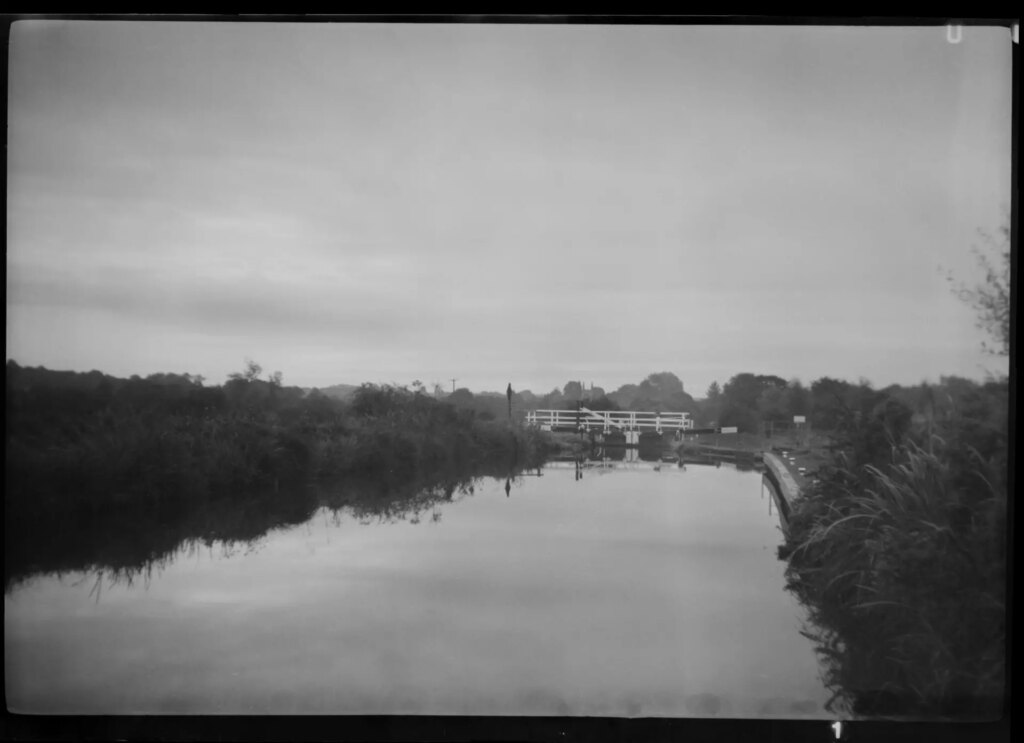
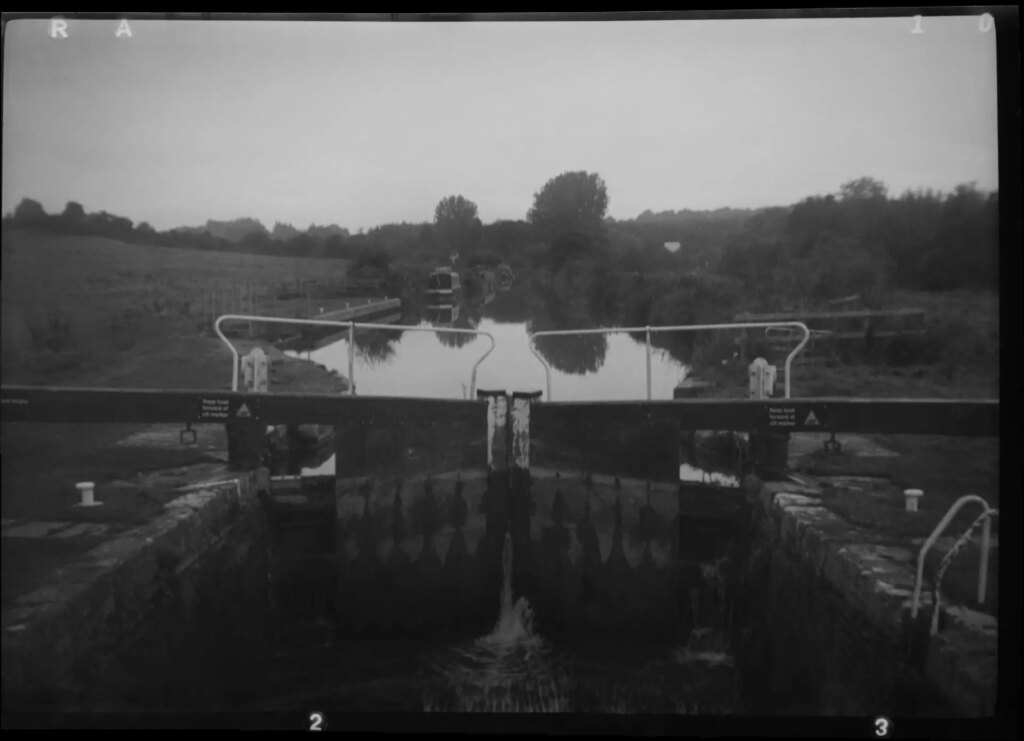
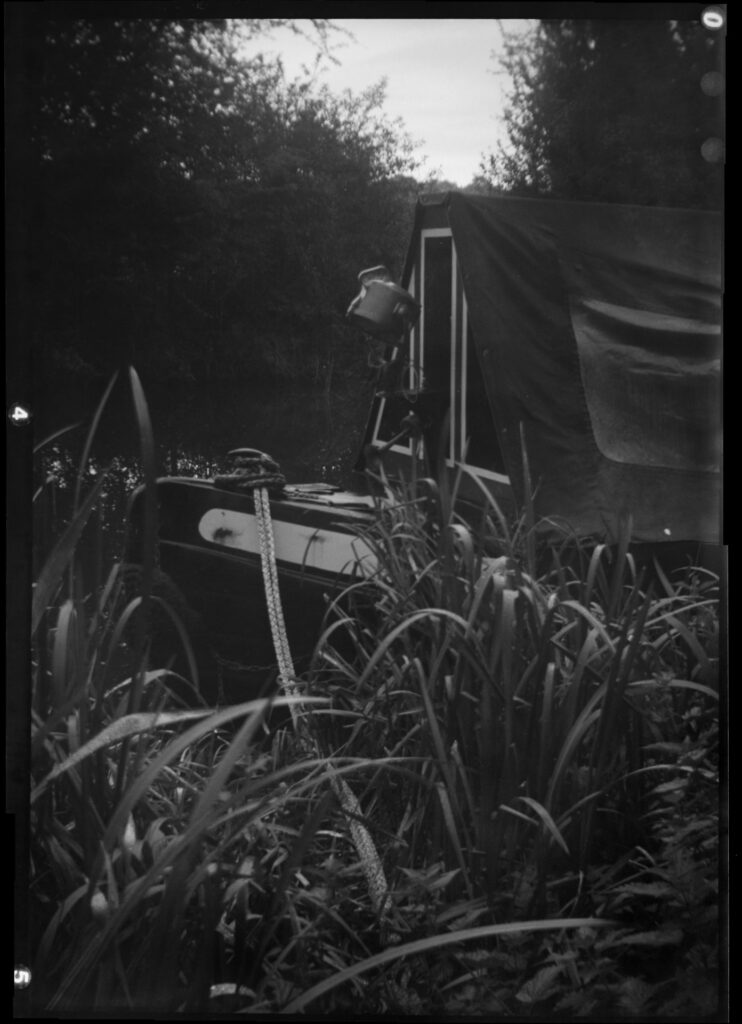
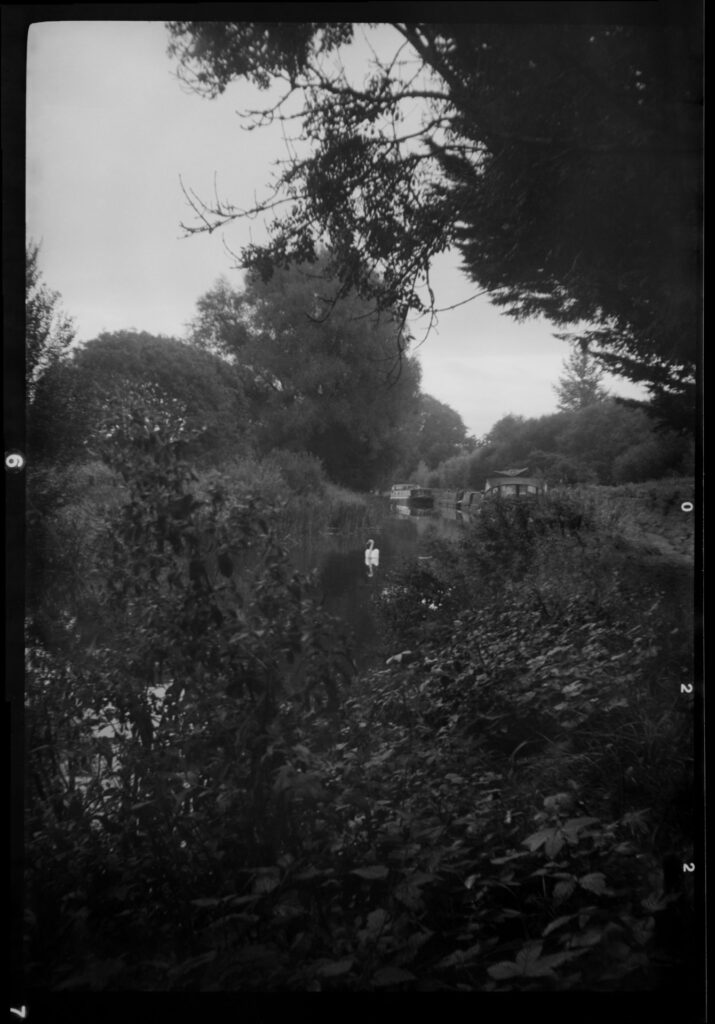

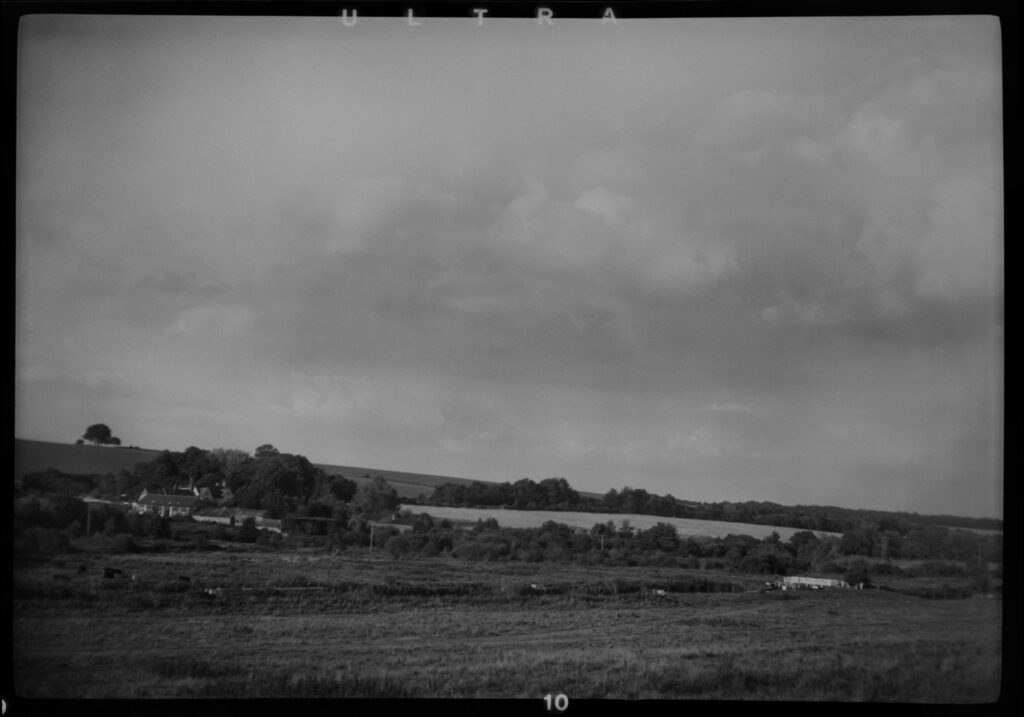
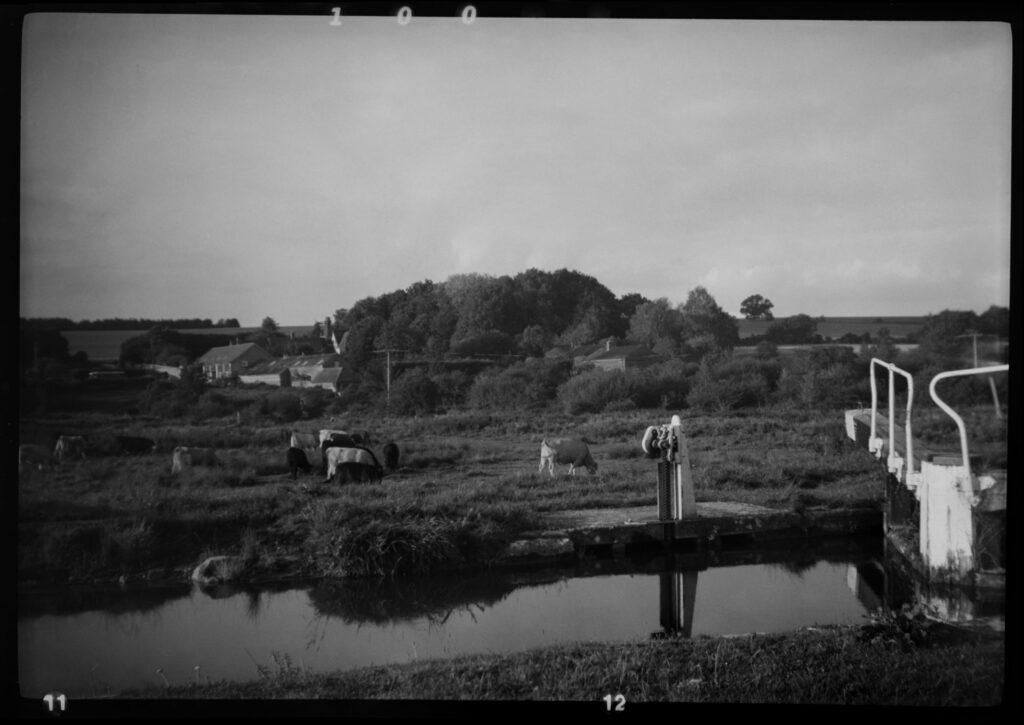
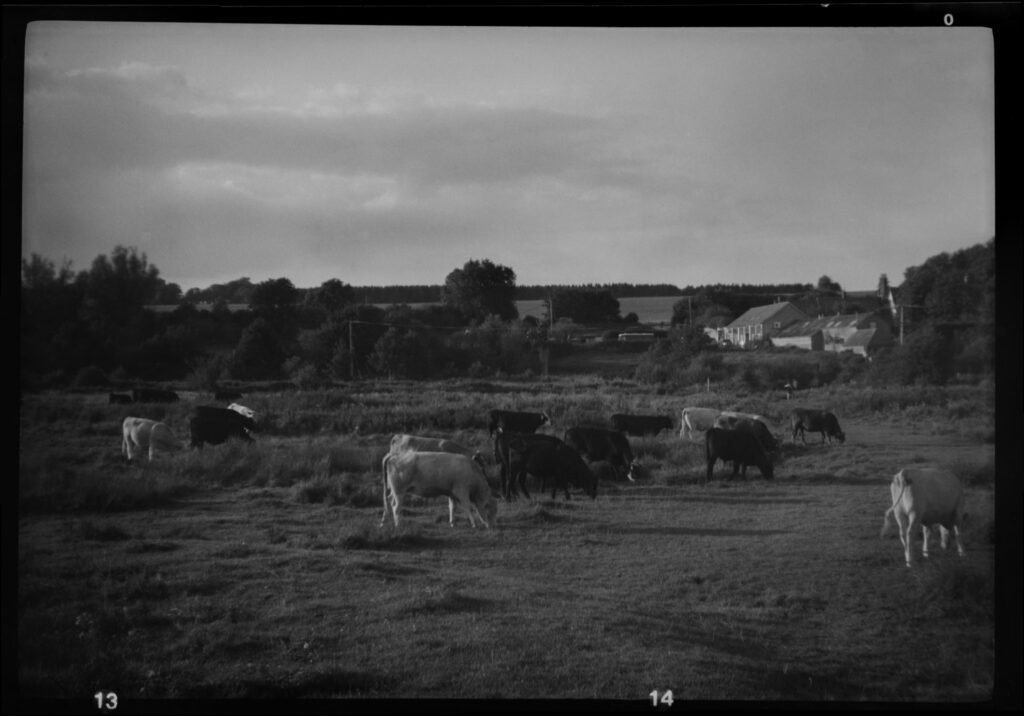
Picking up the box brownie once in a while I find helps me get grounded back into the very basics of photography, notwithstanding the vague viewfinder. I sometimes feel that the plethora of features on the typical digital camera just gets in the way of the fundamentals of taking the photo. Stripping a camera back to just the bare essentials; a (mostly) light tight box, coupled with the unsharp rendering of the meniscus lens I find takes the picture taking process back to a simpler time.
It might not be the fastest and best way to take a photograph compared to a modern digital camera, but just like cruising a narrowboat on the Cut, it’s more about the journey than the destination.
Share this post:
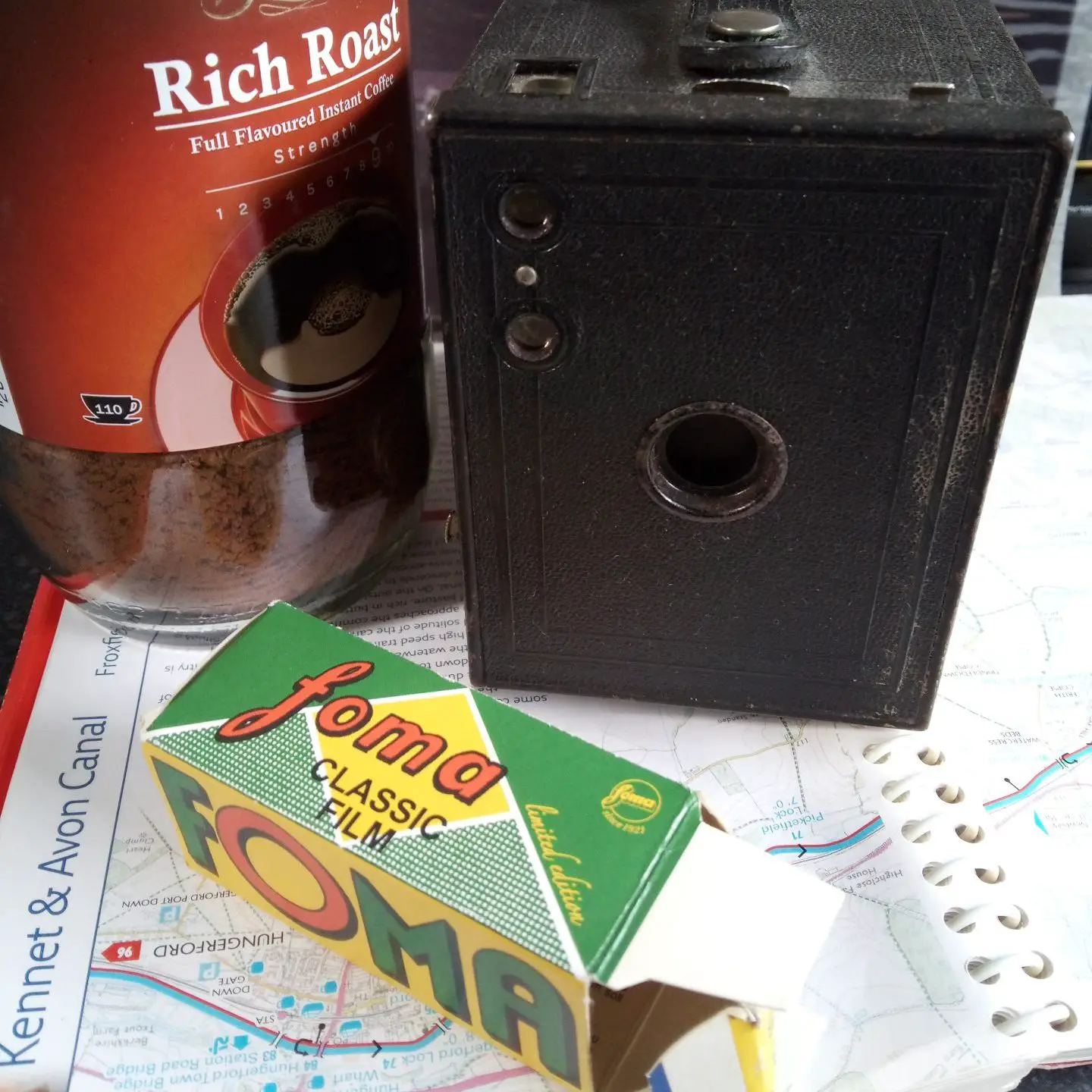








Comments
Bob Janes on The Whole Roll – 8 frames through a Box Brownie and a mug of strong Coffee.
Comment posted: 01/11/2023
Comment posted: 01/11/2023
Don ball on The Whole Roll – 8 frames through a Box Brownie and a mug of strong Coffee.
Comment posted: 01/11/2023
Comment posted: 01/11/2023
Jeremy T on The Whole Roll – 8 frames through a Box Brownie and a mug of strong Coffee.
Comment posted: 01/11/2023
Comment posted: 01/11/2023
Bradley Newman on The Whole Roll – 8 frames through a Box Brownie and a mug of strong Coffee.
Comment posted: 01/11/2023
Dean on The Whole Roll – 8 frames through a Box Brownie and a mug of strong Coffee.
Comment posted: 02/11/2023
Thanks for a great read, I thoroughly enjoyed it.
Dean.
Stevenson G on The Whole Roll – 8 frames through a Box Brownie and a mug of strong Coffee.
Comment posted: 02/11/2023